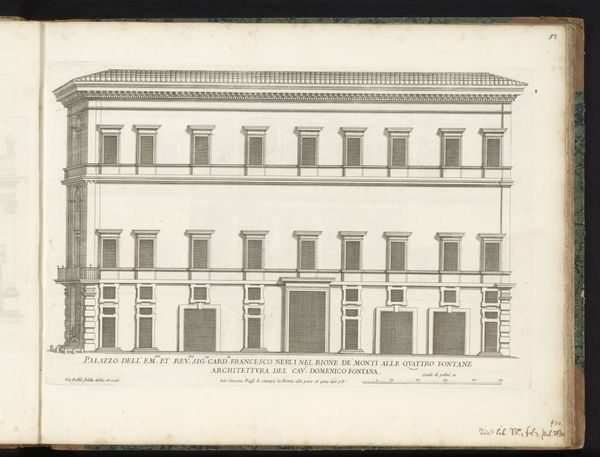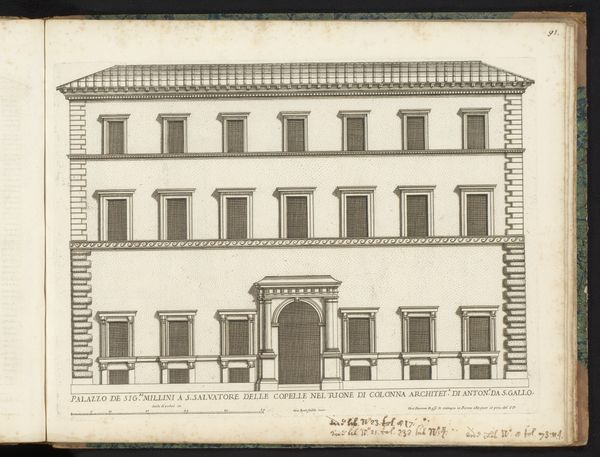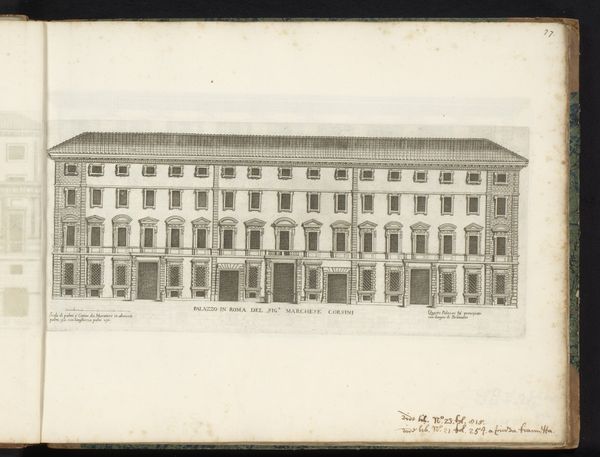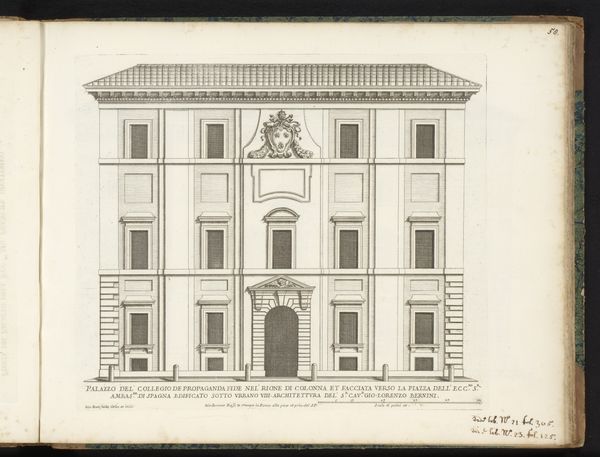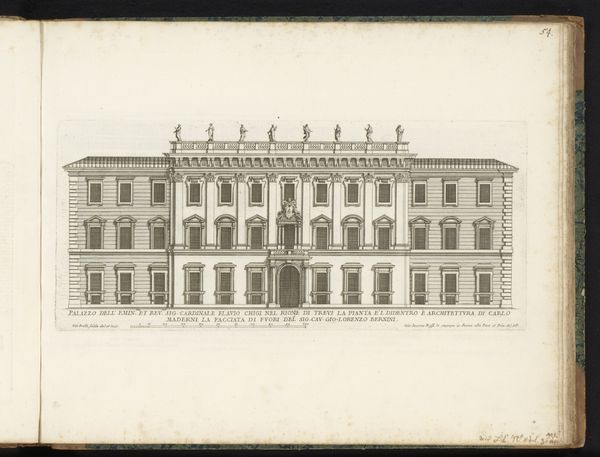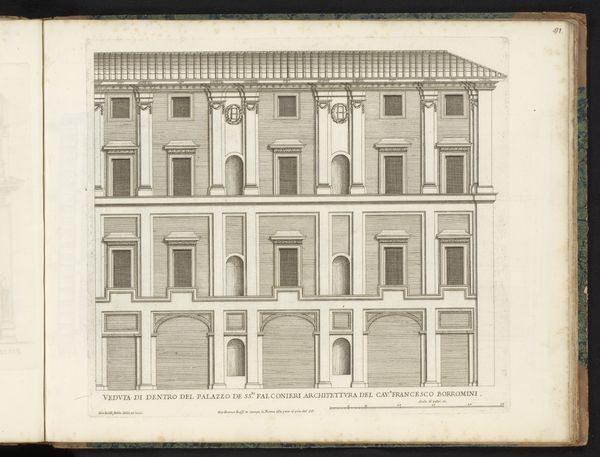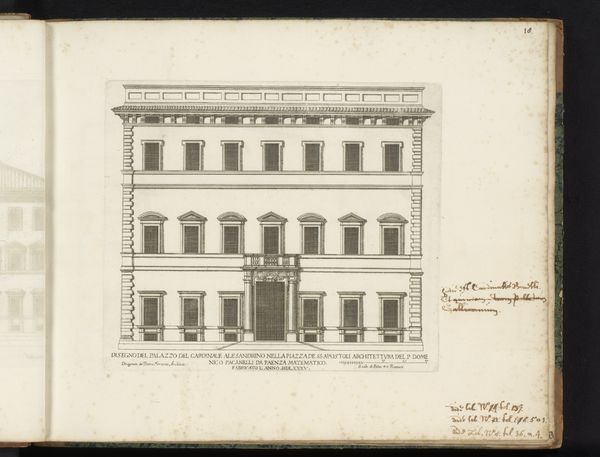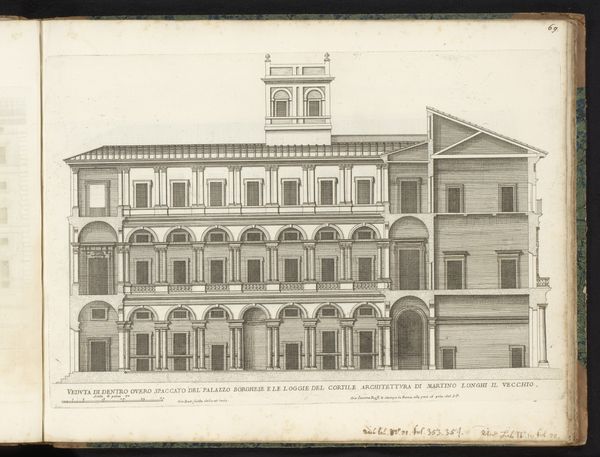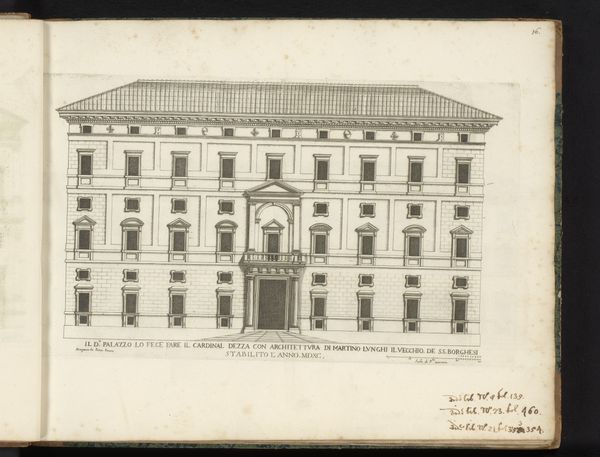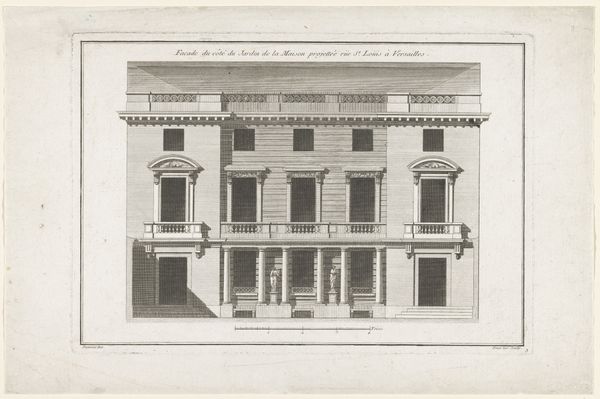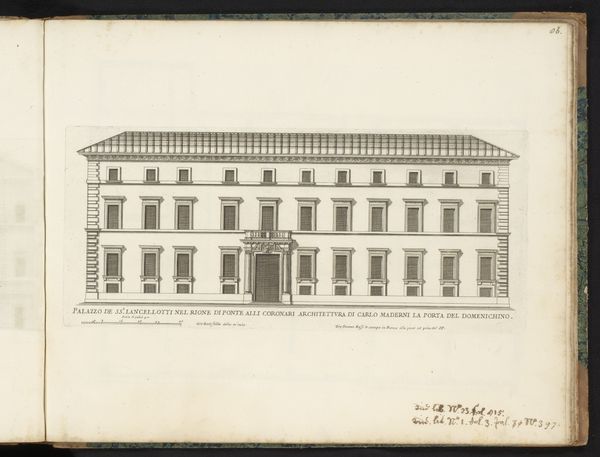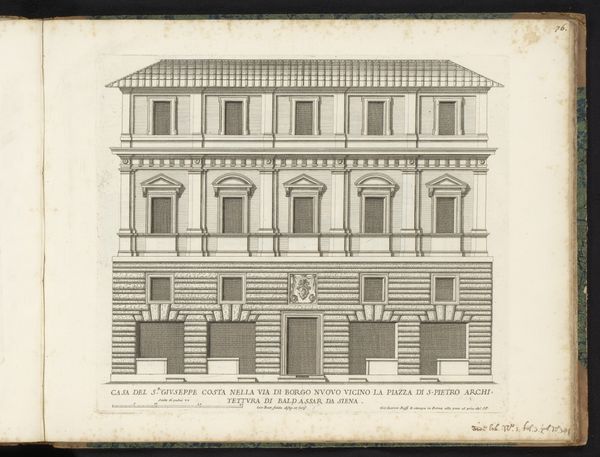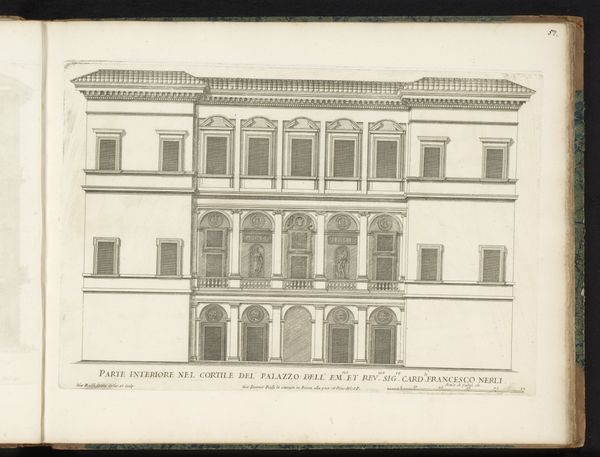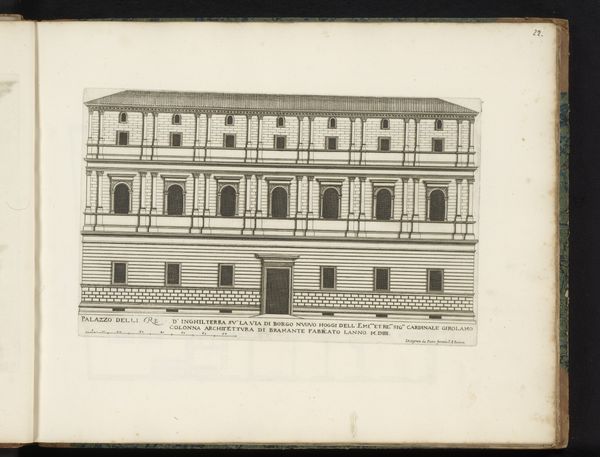
print, engraving, architecture
#
baroque
# print
#
perspective
#
cityscape
#
engraving
#
architecture
Dimensions: height 252 mm, width 385 mm
Copyright: Rijks Museum: Open Domain
Curator: This engraving, titled "Facade van Palazzo Massimo alle Colonne," comes to us from Giovanni Battista Falda, dating back to after 1655. It's a study in the architectural rendering of Baroque facades, currently housed in the Rijksmuseum. Editor: Striking. Even in its black-and-white depiction, the rigorous formality, the balance, and the sheer weight of the structure are so palpable. It's incredibly controlled. Curator: Absolutely. Falda, working after the building was constructed, highlights the meticulous craftsmanship and materials involved in realizing Baldassare Peruzzi’s design. The engraving itself involved a highly skilled labor process of cutting, inking and printing, rendering architectural ambition through careful manual replication. Editor: Yes, the repetition is key. The columns, the windows—the grid establishes an immediate sense of order and grandeur. The technique, the lines etched with precision, creates such a detailed study of texture. Look closely, you can almost feel the stone. Curator: Consider the social context. Prints like these circulated among architects and patrons, disseminating the aesthetic and structural ideas of the Roman elite. Falda’s prints are a commodity—architectural knowledge made available for broader consumption, both visual and intellectual. Editor: And within that structure is contained an incredibly elegant and powerful tension. It’s heavy but refined. All that mass, expertly balanced. Curator: It certainly reflects a time of ambition and deliberate cultivation of power, not only visually through perspective, but politically, by way of promoting design, and then distribution of information by prints. Editor: Reflecting on this engraving, the meticulous precision combined with the grandeur of scale showcases Baroque architecture, but also reminds us of the sheer formal and aesthetic intention that shaped it. Curator: I agree. Looking at it through the lens of its production and dissemination allows us to consider who had access to knowledge, how design was commodified, and how structures of power played out materially through artistic representation.
Comments
No comments
Be the first to comment and join the conversation on the ultimate creative platform.
